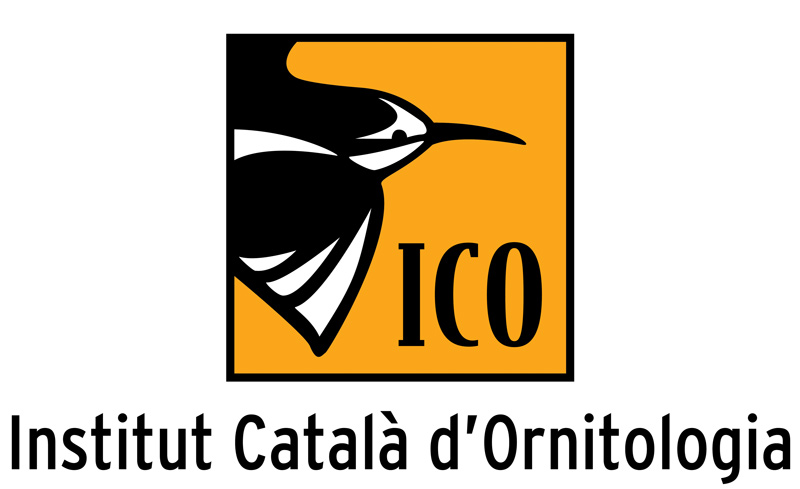
Spain (Catalonia)
The Catalan Ringing Office (Barcelona, ICO) started life in 1975 as a small ringing group (Grup Català d’Anellament) that for 45 years worked as part of the ICONA-Madrid (ESI) ringing scheme and subsequently the Aranzadi-San Sebastian (ESA) scheme, until in 2021 it became a new EURING scheme (ESC) of its own right. Our scheme comprises around 300 enthusiastic ringers ranging from experts (with a general permit), specific ringers who work on a single species or a limited group for research purposes, to helpers. In 2021 the group ringed its two millionth bird since the start of its activity.
Our scheme runs two standardised bird ringing monitoring projects: MIGRACIÓ (bird migration ringing campaigns) and SYLVIA (Catalan Constant Effort Site Scheme). Moreover, since 2003, these and all other ringing activities have been conducted following the same data collection standards (the Catalan Bird Ringing Standards).
The migration project consists of standardized ringing campaigns lasting for several weeks or months in both autumn and spring. Those operating in the later season forming part also of the international Piccole Isole Project since 1992. The MIGRACIÓ project focuses on passerines, mostly in coastal wetlands, but has also been carried out in interesting inland riparian habitats and even on mountain passes in the Pyrenees. Moreover, since 2008 we have also been operating a ringing site in lake Yasmina (Merzouga, Morocco). Two of the migration stations, Canal Vell in the Ebro delta and Aiguamolls de l’Empordà, have 26 years of continuous ringing activity under their belts. In this project, the most commonly captured species are Reed Warbler, Blackcap and Robin, which have generated (along with several other common migrants) numerous interesting overseas recoveries that provided highly useful data for the Migration Atlas.
Our network of SYLVIA stations (our contribution to the EuroCES network) has had up to 96 different ringing sites, of which 43 were active in 2021. Indeed, taking into account the size of Catalonia, this is a dense network. These stations have revealed interesting demographic patterns in specialist Mediterranean breeders such as Sardinian, Western Subalpine, Western Bonelli’s, Cetti’s and Melodious Warblers, and Woodchat Shrike, to name but a few of the commonest species.
One the most remarkable ringed species in Catalonia is Audouin’s Gull. Thousands of these gulls have been ringed – mainly in the Ebro Delta Natural Park and mostly with colour rings – and there have been a large number of recoveries and/or resightings. Other projects worthy of note include the ringing of colonial waterbirds (mainly flamingos, herons, gulls and terns), mostly in the Ebro delta; Griffon Vultures trapped at Orís landfill site; the monitoring of endangered raptors such as Bonelli’s Eagle, Montagu’s Harrier and Lesser Kestrel by staff from the Catalan Government; and the ringing of White Stork chicks in Aiguamolls de l’Empordà Natural Park. In the case of passerines, we should highlight the Bages Ringing Group, who has conducted ringing campaigns targeting several Pyrenean specialities such as Citril Finch, Common Crossbill and Eurasian Siskin, and the Consortium of the Ivars and Vila-sana lagoon. Finally, a number of projects that are not currently active have also provided interesting numbers of recoveries in the past decades: waders in the Ebro delta, Barn Swallows and Yellow Wagtails in wetland roosts, passerine migrants in the Pyrenees in the Cadí-Moixeró Natural Park and La Vall Fosca, and Blackcap survey of migration at Tiana (Maresme).
The Catalan Ringing Office receives continuous support from the Catalan Government (Generalitat de Catalunya). MIGRACIÓ project is made possible thanks to the collaboration of the Ebro Delta and Aiguamolls de l’Empordà Natural Parks. The SYLVIA project is funded by several town councils, natural parks (Cadí-Moixeró, Ebro Delta, Cap de Creus, Aiguamolls de l'Empordà, Montsant, La Garrotxa Volcanica Zone, and L’Albera Site of Natural Interest), the Barcelona Provincial Council (El Montseny, Collserola, Montnegre-Corredor, El Garraf, Serralada Litoral, Serralada de Marina and Sant Llorenç de Munt Natural Parks, and the Guilleries-Savassona Site of Natural Interest), and several consortiums (Les Gavarres, Llobregat Delta Natural Reserves, Sebes i Meandre de Flix Natural Reserve, Ivars i Vila-sana lagoon).
Ringers work both on personal projects and as part of small ringing groups. It is worth mentioning several of the most active groups: Grup Bages, Grup Calldetenes-Osona (GACO), Parus and Sterna. In addition, our scheme embraces researchers from other institutions (Barcelona Natural Science Museum, Barcelona, Lleida and Girona Universities, and the Forest Sciences Centre of Catalonia) and staff from the Catalan Government.
We would also like to acknowledge the help provided by everyone else involved in ringing in Catalonia, including those who fund small projects, the landowners who allow us access to their properties, all the parks, town councils and other institutions, and the many indispensable helpers who it would be impossible to mention in detail here. Thank you very much and we apologise for any omissions. Raül Aymí
Photo caption: Audouin’s Gull's chick just ringed at the Ebro Delta wearing both a metal and a colour ring. Thousands of pulli of this species have been ringed in this site providing many recoveries and, thus, giving a comprehensive data of their movements. Photo: Mariano Cebolla.
Contact the scheme: ico@ornitologia.org